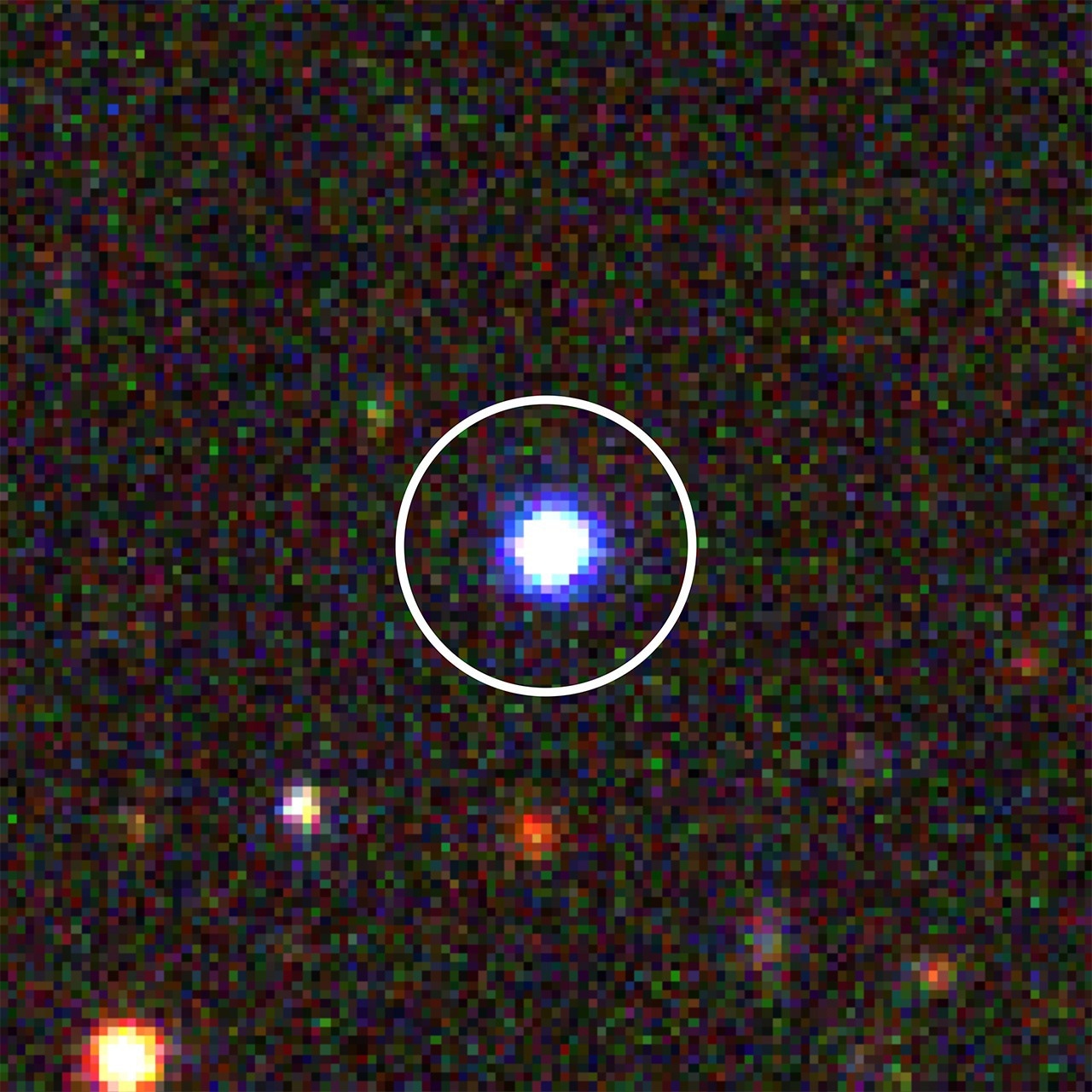Not every discovery proves to be a true breakthrough. The extremely red objects (EROs) discovered in James Webb Space Telescope (JWST) data were one example of this. Based on the analysis, they resemble blue-excess dust obscured galaxies (BluDOGs) that have previously been identified from data collected with the Subaru Telescope.

A blue-excess dust obscured galaxy (BluDOG) imaged by the Subaru Telescope. Image Credit: NAOJ/HSC Collaboration
Some of the universe’s brightest objects, known as quasars, are powered by supermassive black holes, which could have masses up to a billion times greater than that of the Sun. Although these items are the subject of a great deal of investigation, nothing is known about how they form.
According to the most accepted explanation, they arise in galaxies where gas and dust clouds cover up the quasar until it becomes strong enough to blow the clouds away. If this is accurate, it ought to be able to detect the brief window of time when a quasar emerges from its cloud.
Due to the brief transition time, one must observe a high number of pre-quasar candidates in the hopes of being fortunate enough to catch a galaxy at the exact moment when the quasar begins to break out. Using JWST data, a set of extremely red objects (EROs) was recognized as potentially transitionary quasar candidates.
However, despite being dubbed “red,” EROs also contains a sizable blue component, which is comparable to blue-excess dust obscured galaxies (BluDOGs), which were discovered in Big Data from the Subaru Telescope and detailed in a report last year. These findings were made by researchers at the Subaru Telescope, a Japanese telescope in Hawaii.
According to analysis, BluDOGs and EROs most certainly belong to the same class of objects, although there are some significant distinctions as well. It is possible that BluDOGs have advanced further in their evolutionary process than EROs.
To ascertain the actual correlation among EROs, BluDOGs, and quasars, a more extensive pool of candidates must be gathered. The next generation of astronomical instruments, such as the infrared space telescope project GREX-PLUS, which is being developed in Japan, will study the bigger sample.
Journal References
Noboriguchi, A., et. al. (2023) Optical Properties of Infrared-bright Dust-obscured Galaxies Viewed with Subaru Hyper Suprime-Cam. The Astrophysical Journal. doi:10.3847/1538-4357/ab1754
Noboriguchi, A., et. al. (2023) Extreme Nature of Four Blue-excess Dust-obscured Galaxies Revealed by Optical Spectroscopy. The Astrophysical Journal. doi:10.3847/1538-4357/aca403
Noboriguchi, A., et. al. (2023) Similarity between compact extremely red object discovered with JWST in cosmic dawn and Blue-excess Dust-obscured galaxies known in cosmic noon. The Astrophysical Journal. doi:10.3847/2041-8213/ad0e00